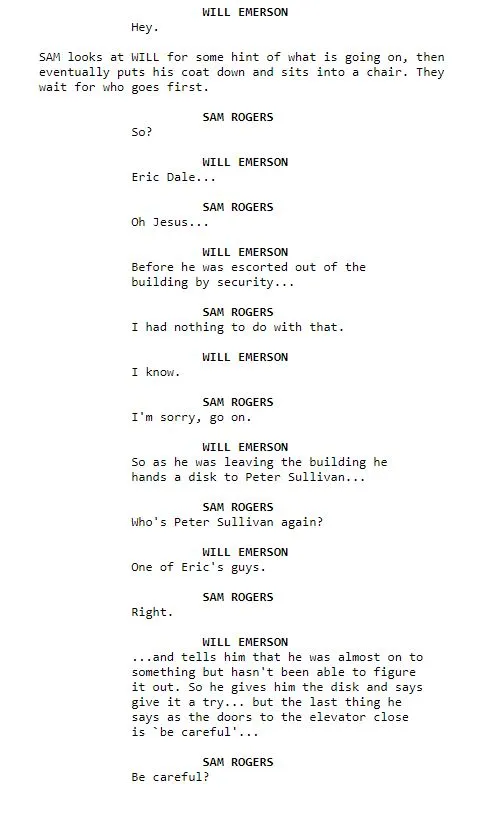Specific Fixes 2: Rhythm Things
I want to look at specific fixes concerning timing and rhythm. Not because syncopation is cool in itself, it’s because of what it can do for character credibility. Whether it’s just VO, or motion capture, or full performance capture, in the writing and the performance, credibility is the key quality: do we believe them? Does that character sound like they know what they’re doing? One way of faking that illusion is through timing and rhythm.
Let’s assume that by timing we’re not talking duration — we’re not having to sync to an animation, and can choose how long we write and deliver our lines.
Obviously, there are a few different kinds of timing. There’s sheer velocity, doing it fast, rushing through the lines. More technically challenging is the impression of speed by reducing the interval between the words but not saying the words faster. Saying things fast and clear makes characters sound expert. This goes double for technobabble, tactical briefings etc.
But having everything the same tempo gets dull fast. We don’t want to bore our audience so we syncopate the dialogue. We vary the length and rhythm of the lines so they’re not just back-and-forth verbal tennis. Repetition and interruption in the script is great for this.
Have a read of this scene from J.C. Chandor’s tremendous halogen-core financial crash thriller Margin Call (2011).
You can find the screenplay here. It’s scene 24.
And here’s how that scene plays out with actors the calibre of Paul Bettany as Will Emerson and Kevin Spacey [amazing actor, not such a great human being] as Sam Rogers.
You don’t have to know what these characters are talking about to know that they know what they’re talking about.
What Can We Steal?
Syncopation, interruption and repetition can make characters seem human and smart.
Next up, being behind the beat.

